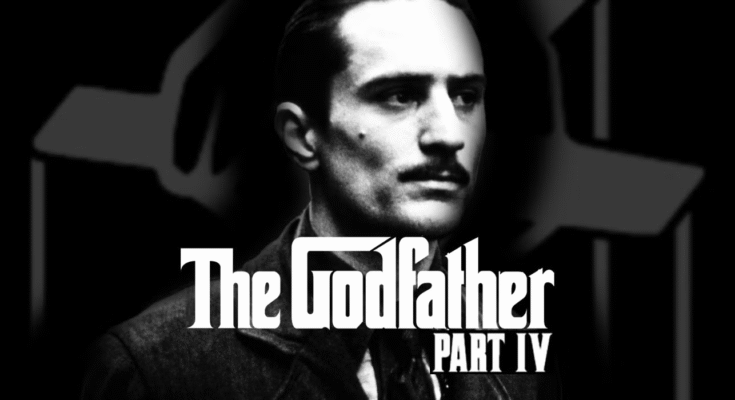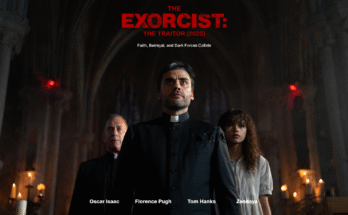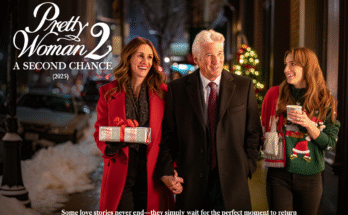After more than three decades of silence, the Corleone name returns to the screen — and with it, the weight of one of cinema’s most sacred legacies. The Godfather Part IV (2025) dares to reopen the doors of power, greed, and tragedy, crafting a haunting new chapter that both honors and redefines the mythos of the family that built an empire in blood.

From its opening moments, Francis Ford Coppola’s influence is felt in every frame — though he does not direct, his daughter Sofia Coppola brings a poetic melancholy to the director’s chair. Her vision is both reverent and rebellious, capturing the slow decay of the old mafia world while introducing a new generation hungry for control.
Al Pacino returns as an aged, ghostlike Michael Corleone, now living in isolation, haunted by the sins that built his empire and destroyed his soul. His presence is felt more as a specter than a man — a living reminder that even kings eventually kneel before time. In a chilling opening monologue, he mutters: “Power doesn’t die. It waits for someone desperate enough to take it.”
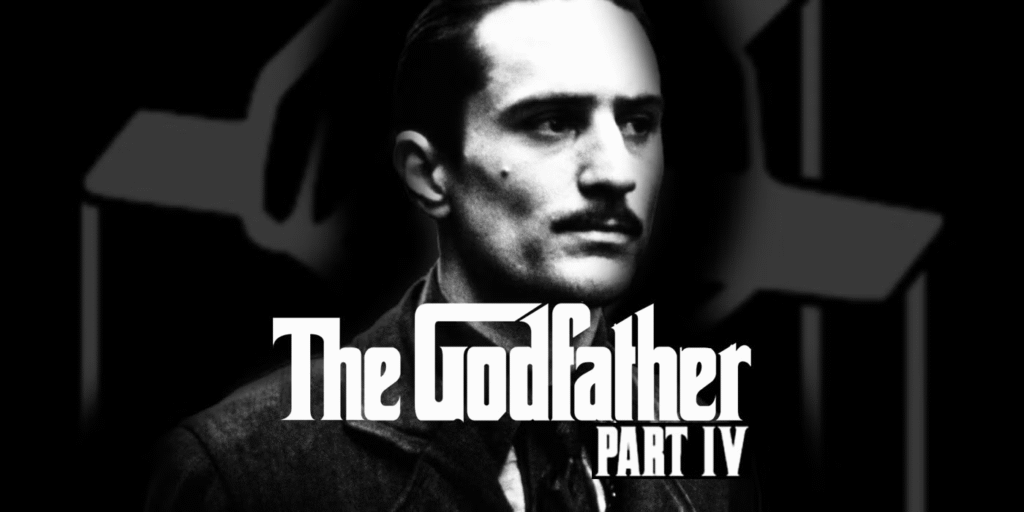
Enter Leonardo DiCaprio as Vincent Mancini Jr., the illegitimate grandson of Sonny Corleone and the new face of the underworld. DiCaprio delivers a tour de force performance — magnetic, calculating, and unpredictable. He embodies both the charm and volatility of the Corleone bloodline, torn between his grandfather’s temper and Michael’s cold intellect. Watching him rise through the ranks feels like witnessing the rebirth of destiny — and its curse.
Robert De Niro, returning to the family legacy he helped build in Part II, plays an aging consigliere — a man shaped by history, now serving as both mentor and warning to the new generation. His quiet gravitas adds texture to the story, linking past and present through unspoken regret.
Sylvester Stallone, in a career-redefining turn, joins as a rival mafia patriarch — a former ally turned formidable adversary. His performance is both brutal and restrained, capturing a man who understands that survival in this world demands both mercy and menace. His face-to-face scenes with DiCaprio crackle with tension — two predators circling, both convinced the other is the future.
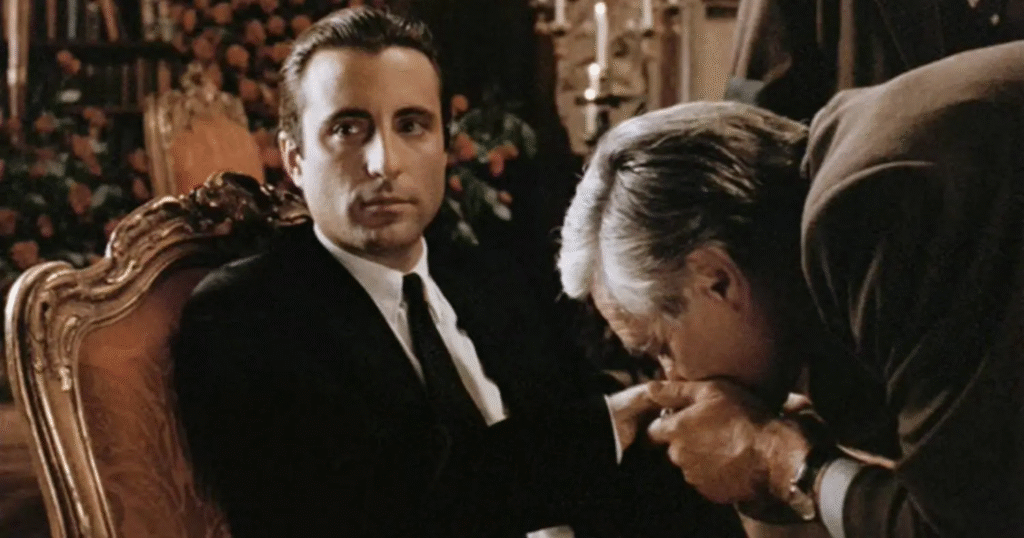
And then there’s Sofia Coppola, not only directing but stepping briefly into the role of Mary Corleone in haunting flashbacks — a spectral reminder of Michael’s greatest loss. Her inclusion blurs the line between memory and reality, deepening the film’s elegiac tone.
Cinematically, The Godfather Part IV is a masterwork of visual storytelling. Every frame drips with operatic grandeur — candlelit confessions, rain-soaked executions, and long, quiet dinners where betrayal simmers beneath silverware and silence. The cinematography evokes Gordon Willis’s chiaroscuro genius, with modern precision and a mournful palette of golds and shadows.
Narratively, the film weaves two timelines: Michael’s final days, spent reflecting on the ghosts of his choices, and Vincent Jr.’s ruthless ascent in a digital age where crime has evolved, but corruption remains timeless. The result is a rich, layered tragedy about inheritance — not just of power, but of guilt, legacy, and damnation.
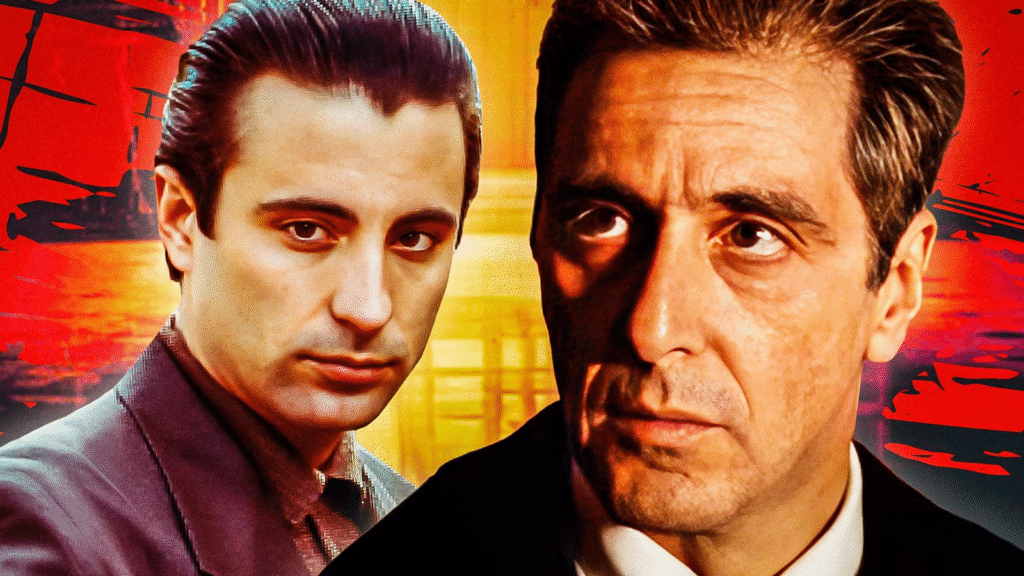
The score, composed by Hans Zimmer, resurrects Nino Rota’s iconic themes and fuses them with new motifs — thunderous, mournful, and hauntingly beautiful. When the trumpet theme swells during the climactic baptism sequence of the next generation, audiences will feel the weight of fifty years of cinematic history.
⭐ Rating: 9.8/10 — A breathtaking, operatic return. Visually majestic, emotionally devastating, and worthy of the name Godfather.
